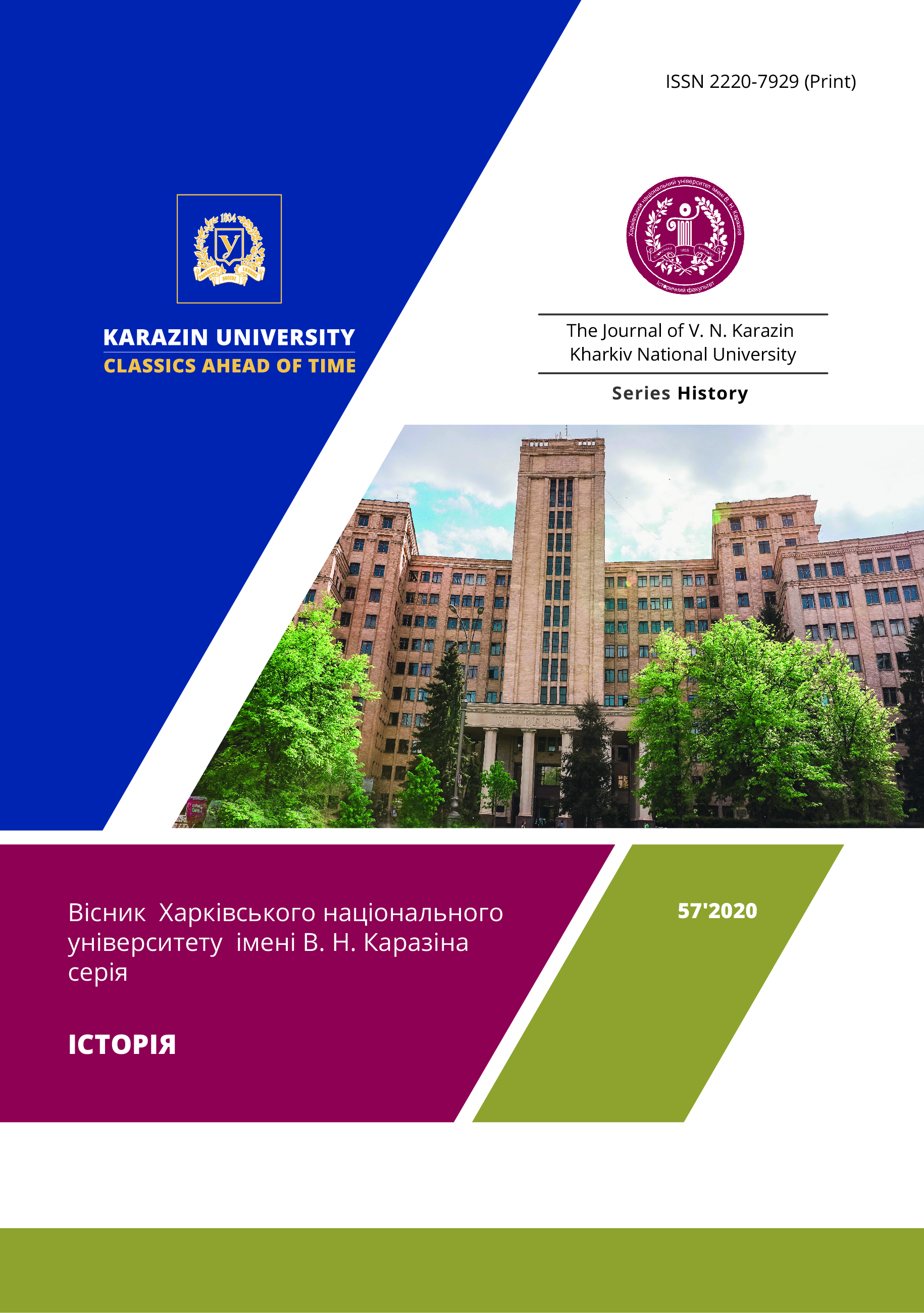Big City as a 'Voice' and 'Image' (on Materials of the City Dnipro)
Abstract
The article explores how the basic approaches in socio-humanitarian knowledge about city studies have changed. More specifically, there are some changes in the system of metaphors, which serve as a basis for studying the city space. A gradual shift from “real” space metaphors domination to the constructed dimensions is the main tendency. “Imaginary” and “symbolic” are now the core elements of the urbanistic studies. Therefore, the issue of symbolization of such places is becoming more interesting than the studies of the city topography and real objects or groups that constitute interconnected territorial units. The paper presents the results of researching the images of “creative city” as perceived by the student youth of Dnipro. The author of the article defines the differences between the above-mentioned images and the reality of Dnipro. There are several explanations of such differences. On the one hand, the youth notices the elements of the objects of the city space that fit into their ideology of creativity (some of the places-symbols, as co-workings, are important because of mere fact of their existence). On the other hand, during the process of one’s self-realization, they can face practical problems, and symbolization becomes less important. Since there are also some changes in symbolization of the city space (from changes in the holistic descriptions of the city to the dynamics of the topographic nomination system), the evolution of the generalized image of the city, which is incorporated into the citizens’ consciousness, becomes an interesting issue. The official discourse that is available for the citizens due to historical literature becomes one of the competitive projects. The article discusses the dynamics of the symbolization of the history of Katerynoslav-Dnipropetrovsk-Dnipro in traditional, soviet, and post-soviet projects. The author of the paper demonstrates the logic of changes in the systems of events and characters, which help to present the history of the city to the locals within each of the projects.
Downloads
References
Болебрух, А. та ін. Дніпропетровськ: віхи історії. Історичний нарис. Дніпропетровськ, 2001.
Серто, М. Прогулянки містом. У зб.: К. Міщенко, С. Штретлінг (ред.), Рухливий простір. Київ, 2018, с. 192-211..
Флорида, Р. Homo Creativus: Як новий клас завойовує світ. Київ, 2018.
Хальбвакс, М. Коллективная и историческая память. Неприкосновенный запас, № 2/3, 2005, c. 9-27.
Гримич, М. Культурний ландшафт: термінологічний екскурс. У зб.: Культурний ландшафт Києва та околиць, т.1. Київ, 2017, c. 10-25.
Легеза, С. Сучасне місто як символічний простір: «місце», «знаки», «зв’язок часів» (на прикладі м. Дніпропетровська). У: О. Міхеєва та ін. Соціологія міста. Донецьк, 2010, с. 446-52.
Легеза, С. Трансформації соціальної пам’яті в історико-краєзнавчих описах міста. У: Особистість і соціальні інститути в урбанізованому суспільстві: місто Дніпро, т. 1. Дніпро, 2018, с. 162-90.
Шатров, М. Город на трех холмах. Днепропетровск, 1966.
Штретлінг, С., Міщенко, К. Передмова. У: Рухливий простір. Київ, 2018, с. 6-11.
Тьоніс, Ф. Спільнота та суспільство. Київ, 2005.
Вебер, М. Город. Москва, 2017.
Яворницкий, Д. История города Екатеринослава. Днепропетровск, 1989.
Зіммель, Г. Великі міста і духовне життя. Ї, число 29, 2003, c. 315-25.
Copyright (c) 2020 Legeza S. V.

This work is licensed under a Creative Commons Attribution 4.0 International License.
Authors who publish with this journal agree to the following terms:
- Authors retain copyright and grant the journal right of first publication with the work simultaneously licensed under a Creative Commons Attribution License that allows others to share the work with an acknowledgement of the work's authorship and initial publication in this journal.
- Authors are able to enter into separate, additional contractual arrangements for the non-exclusive distribution of the journal's published version of the work (e.g., post it to an institutional repository or publish it in a book), with an acknowledgement of its initial publication in this journal.
- Authors are permitted and encouraged to post their work online (e.g., in institutional repositories or on their website) prior to and during the submission process, as it can lead to productive exchanges, as well as earlier and greater citation of published work (See The Effect of Open Access).




